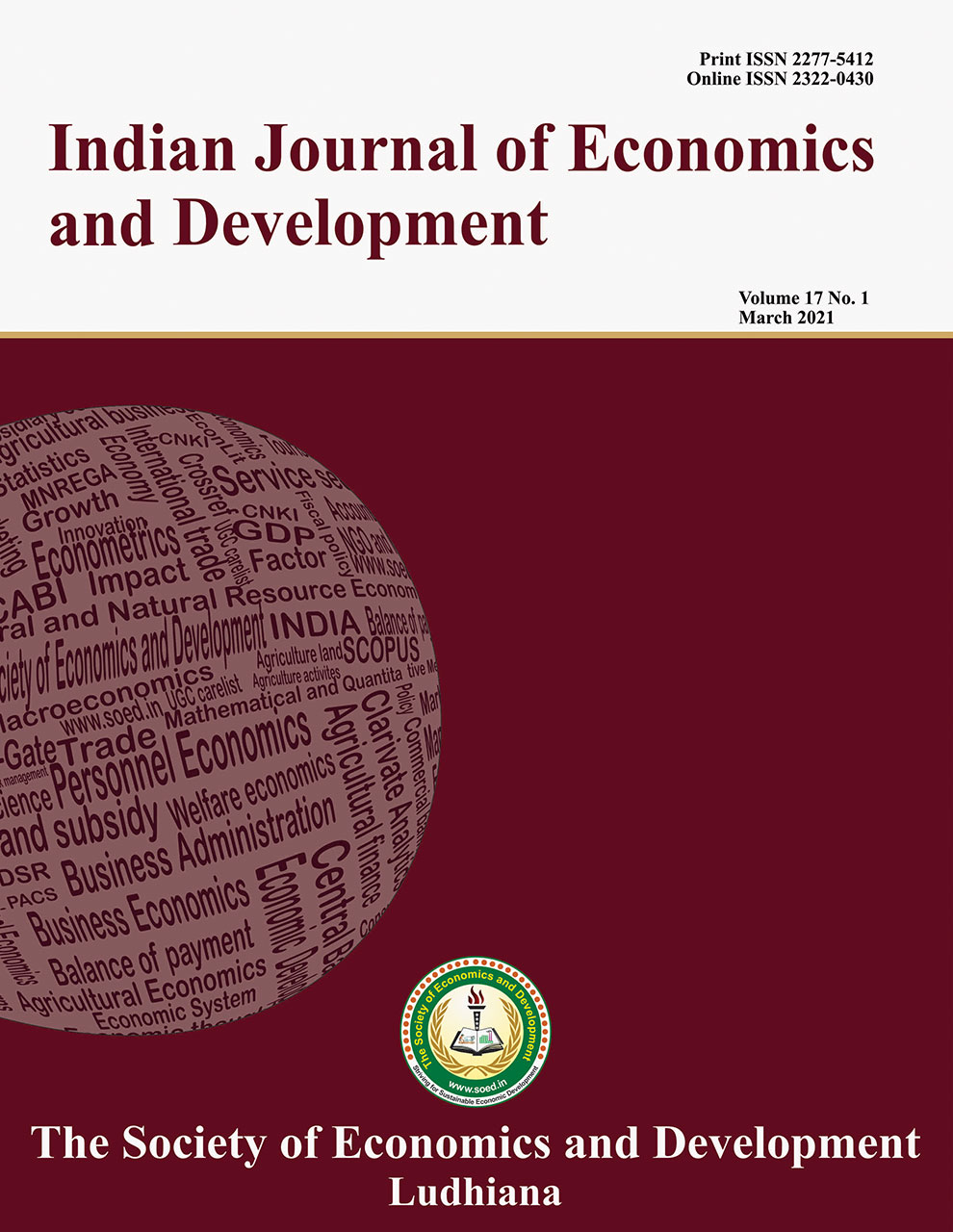Economic Feasibility of Rose under Protected Cultivation in Himachal Pradesh

Price: ₹ 500.00
Author: Arshdeep Singh Chahal , Kapil Dev and Ravinder Sharma
Author Address: Assistant Professor, GTB Khalsa College, Malout, Punjab-152107(Punjab), Research Scholar, Department of Social Sciences and Professor, Department of Social Sciences, Dr. Y.S Parmar University of Horticulture and Forestry 3 Nauni, Solan-173230 (HP)
Keywords: Benefit-cost ratio, cost of production, economic feasibility, land use, net returns
JEL Codes: D24, Q14, R14
Abstract
Economic feasibility of rose under protected cultivation in Solan district of the mid-hill zone of Himachal Pradesh revealed that under the average size of landholding on the overall category was found 3.34 ha of which 23.01 percent was cultivated area. The cropping intensity was highest (173.04 percent) on small playhouse growers followed by semi-medium (172.66 percent), medium (164.20 percent) and large (138.48 percent). At the overall level, it was worked out to be 155.86 percent, which indicated that there was a scope to increase farm efficiency. It can be referred from the analysis that the average cost of production of rose per cut stem varied between 1.60 to 2.11. The net returns from the production of rose-cut stems were ? 3,21,728.66 under 500 m polyhouse, whereas, under 2000 2 m it was ? 15,94,952.69. The net present value of rose was found to vary between 8,37,453 to 5,80,871 under different sizes of non- 2 subsidized, whereas, under subsidized polyhouses, it ranged from 10,14,052 to 61,97,961 under 20 years life of polyhouse. A benefit-cost ratio under subsidized polyhouses of 500 to 2000 m varied 1.39 to 1.74 with an internal rate of return 28 to 41 percent. 2 Similarly, BCR varied from 1.30 to 1.66 under different sizes of non-subsidized polyhouses with an internal rate of 24 to 38 percent. At a discount rate of 10 percent, the present value of 1 received at the end of 20 years, varied between 1,12,117 to 7,77,664 under nonsubsidized and 1,35,760 to 8,29,775 under subsidized polyhouses of different sizes respectively. Therefore the production of rose-cut stems under subsidized and non-subsidized polyhouses infeasible and profitable. Hence, the economic indicators showed that protective cultivation is an economically viable option.
Description
Indian Journal of Economics and Development
Volume 16 No. 3, 2020, 372-380
DOI: https://doi.org/10.35716/IJED/20022
Indexed in Clarivate Analytics (ESCI) of WoS
Scopus : Title Accepted
NAAS Score: 4.82



